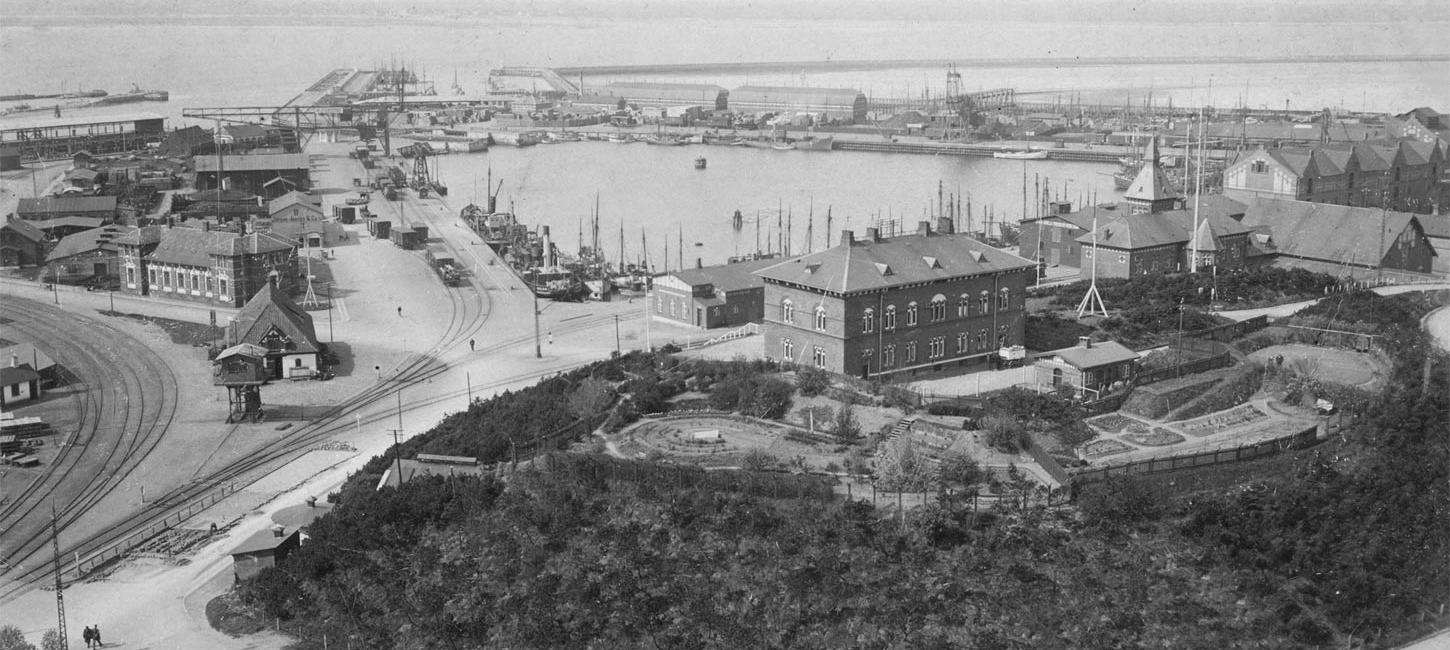The history of Esbjerg
Esbjerg is a young city. This is evident, among other things, from the American-style grid plan of the city centre, with streets intersecting each other at right angles.
The rapid growth of the city matching the growth of industrial development is also reflected in the city architecture, which is characterised by imitations of both Italian and German architecture with romanesque details in a number of the older properties in the centre. Today, buildings are spread out over a large area, with a sprinkling of green oases between built up areas.
In actual fact, it was a lost war that led to the establishment of Esbjerg. In 1864, Denmark lost the war against Prussia over Schleswig-Holstein, thereby losing access to the harbours that had been ports of disembarkation for Danish agricultural exports - mainly livestock. So the Danish politicians approved in 1868 The Establishment Act for Esbjerg Harbour, a harbour which was to replace the export ports that had been lost. The first ship was able to enter the new harbour in Esbjerg in 1873.
Before the harbour was built, there were only a few windswept farms here. But huge changes were on the way. Esbjerg became an independent town in 1894 and a borough town in 1899.
The population has grown from 20 (twenty) in 1800, 460 in 1870 and 13,355 in 1901 to just over 83,000 today. That means that over the past 100 years it has increased by 520%.
Denmark's Chicago
Esbjerg is nicknamed Denmark's Chicago because in its first decades after the opening of the dock, the town underwent high growth and a rapid population increase. By the time Esbjerg gained market town status in 1899, its population had increased to around 13,000. A great many of the migrants to Esbjerg were fishermen, who came from the whole of the west coast of Jutland with an eye on the opportunities presented by the new harbour. The railway reached the town simultaneously with the inauguration of the dock in 1874, which made it possible to sell and export fish. Although never the plan, Esbjerg went on to become Denmark's largest fishing port. Port of Esbjerg has been extended many times over, but the dock still exists and is referred to as the cradle of Esbjerg.
Learn more about the history of the Port of Esbjerg
Europe's parents-in-law
King Christian IX (1863-1906) and Queen Louise were on the throne when the Esbjerg Harbour act came into force in 1868. The equestrian statue of Christian IX on the market square commemorates the king's connection to the young town. And it is hardly a coincidence that two of the city's striking restaurants on the Square have been called after King Christian IX and Queen Louise.
On 26 May 1842, Louise of Hessen-Kassel in Germany married the then Prince Christian of Denmark. Louise had the right of inheritance to the Danish throne, but she relinquished this right to her husband when she married Christian, who became king of Denmark in 1863.
The couple had six children. In 1843, Frederik (later Frederik VIII of Denmark); in 1844, Alexandra (who became the wife of the British prince Edward, who later became Edward VII); in 1845, Vilhelm (who later was elected King of Greece under the name George I); in 1847, Dagmar (who in 1866 married the later Tsar Alexander III of Russia); in 1853, Thyra (who married Count Ernst August in 1878); and in 1858 Valdemar (who married Marie of Orléans in 1885).
Because of the many marriages entered into with representatives of the European royal families by the children of the royal couple, they were popularly referred to as "Europe's parents-in-law".
Neighbour to Denmark's oldest city
In just 150 years, Esbjerg, with its 83,000 or so inhabitants, has grown into Southwest Denmark's regional centre and the country's fifth-largest city - only surpassed by Aalborg, Aarhus, Odense and Copenhagen - all of which have had a lot more time to grow to their present size.
It is also something of a paradox that the young industrial city has as its closest neighbour Denmark's oldest city - the old royal and cathedral city of Ribe, which lies only 30 km south of Esbjerg.
